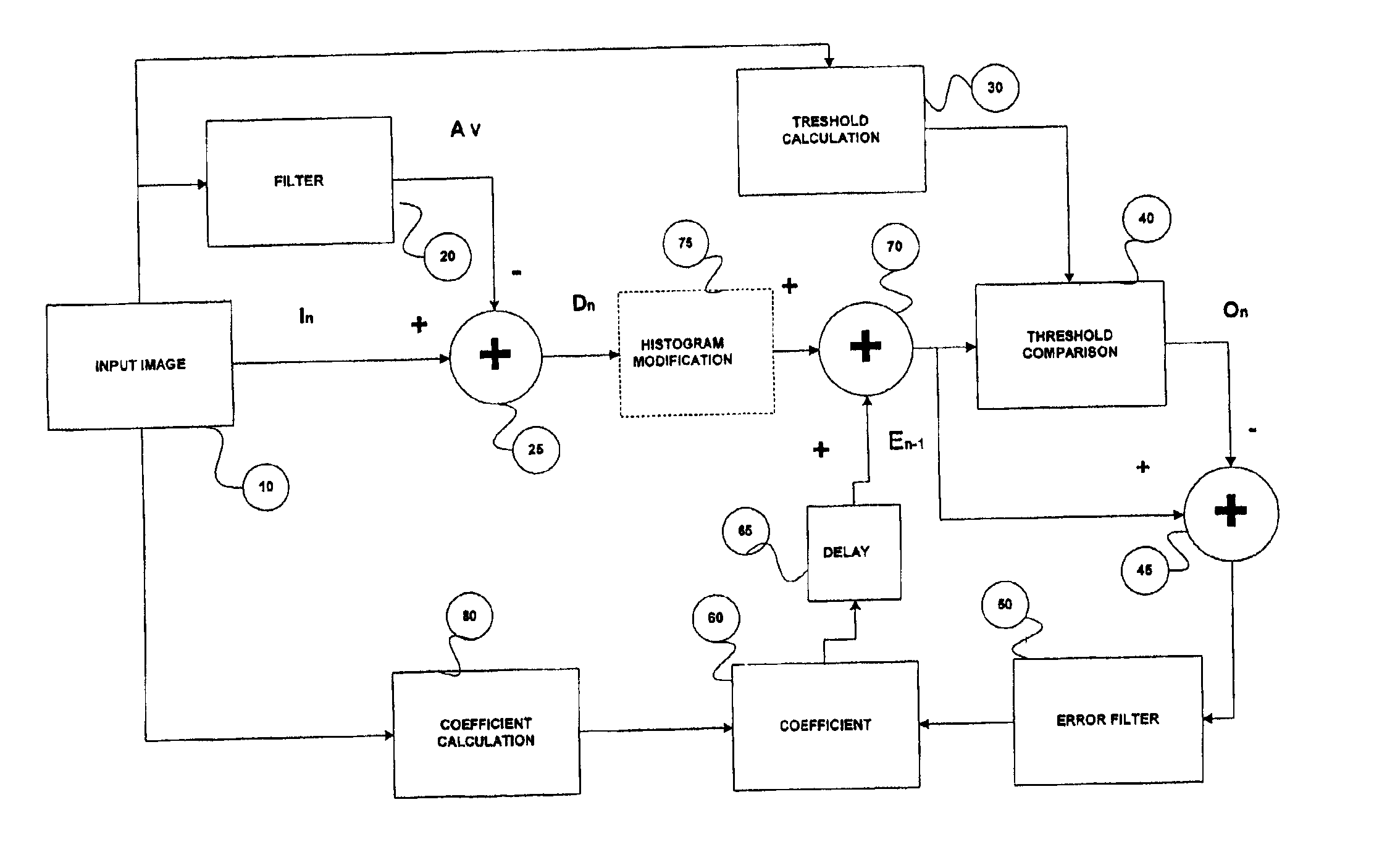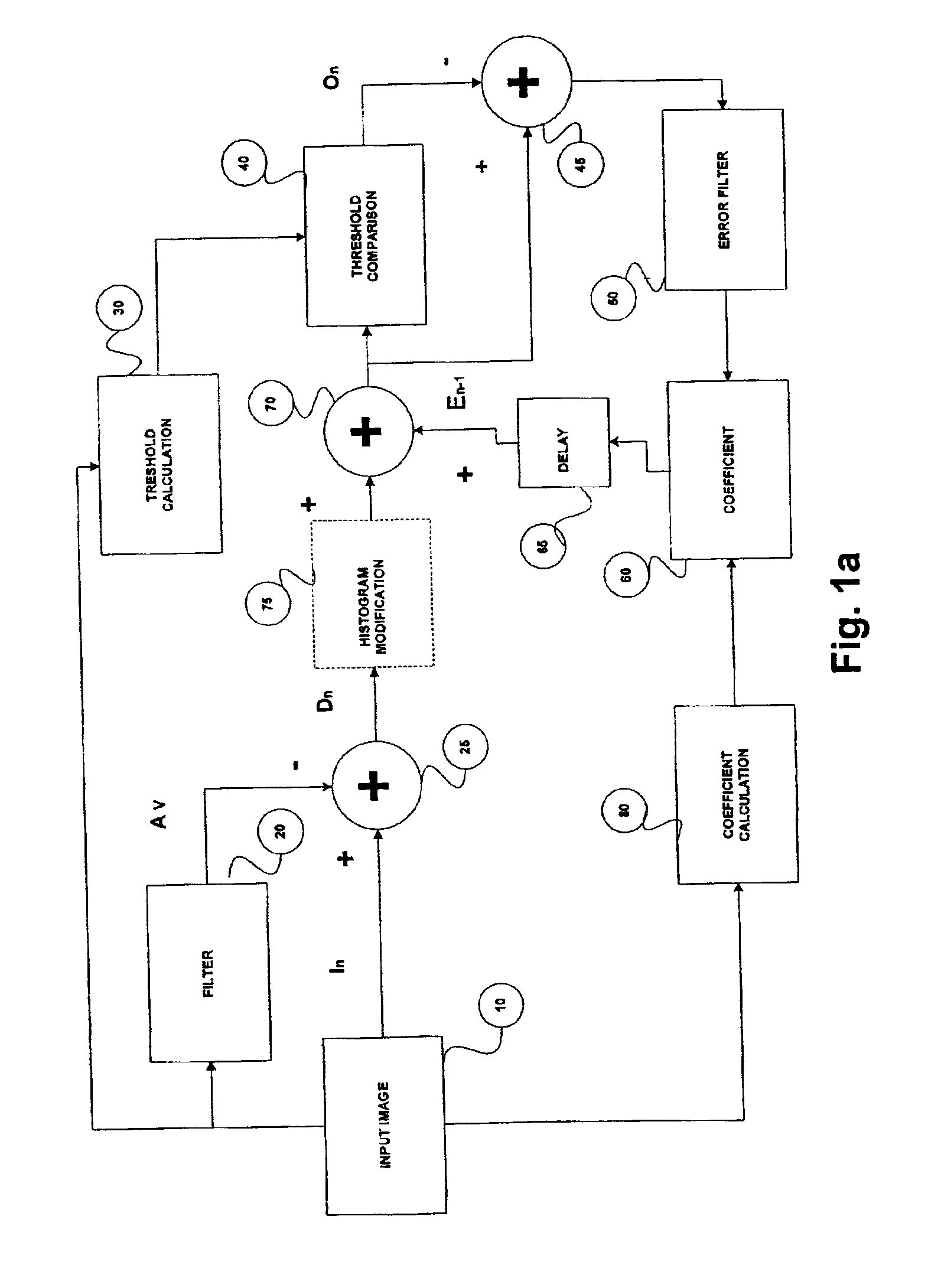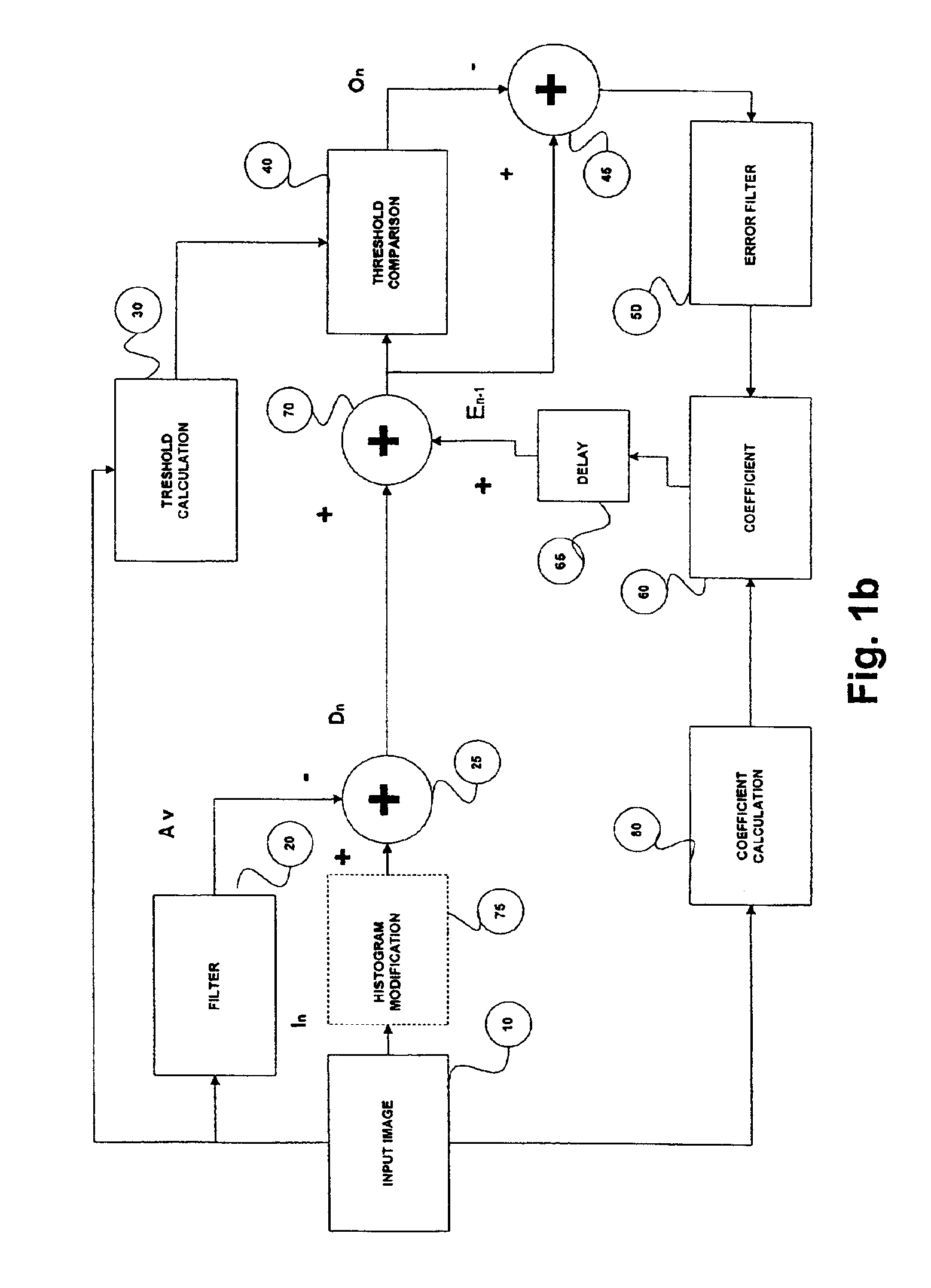Rendering images utilizing adaptive error diffusion
a technology of error diffusion and image data, applied in image enhancement, digitally marking record carriers, instruments, etc., can solve the problems of many ordered dither digital halftoning methods suffering from low frequency artifacts, low frequency artifacts are very noticeable, etc., and achieve the effect of reducing artifacts and being easy to implemen
- Summary
- Abstract
- Description
- Claims
- Application Information
AI Technical Summary
Benefits of technology
Problems solved by technology
Method used
Image
Examples
embodiment
Sample Embodiment
[0043]In a specific embodiment, shown in FIG. 2, the output of the filtering block 20, Avn, is given by Equation (2). The threshold calculation 30 is a function of the output of the filtering block 20 and is given by
t( . . . ,Ik, . . . , I.n, . . . )=C0Avn (7)
which is the same function as in Equation 4 when the output of the filtering block 20, Avn, is given by Equation (2). The output of the coefficient calculation block 80 depends on the output of the filtering block 20, Avn, and the difference Dn and is given by
C1+C2{abs((Dn−Avn) / Avn)} (8)
When the output of the filtering block 20, Avn, is given by Equation (2), Equation (8) is the same as Equation (6).
[0044]Histogram equalization is included after the summing node 25. The processing of the input image pixels 10 occurs as described in the preceding section.
[0045]The value of N in Equation (2) (the extent of the filter), C0, C1, and C2 (first, second parameters and third parameters) can be selected to produce the...
PUM
 Login to View More
Login to View More Abstract
Description
Claims
Application Information
 Login to View More
Login to View More - R&D
- Intellectual Property
- Life Sciences
- Materials
- Tech Scout
- Unparalleled Data Quality
- Higher Quality Content
- 60% Fewer Hallucinations
Browse by: Latest US Patents, China's latest patents, Technical Efficacy Thesaurus, Application Domain, Technology Topic, Popular Technical Reports.
© 2025 PatSnap. All rights reserved.Legal|Privacy policy|Modern Slavery Act Transparency Statement|Sitemap|About US| Contact US: help@patsnap.com



